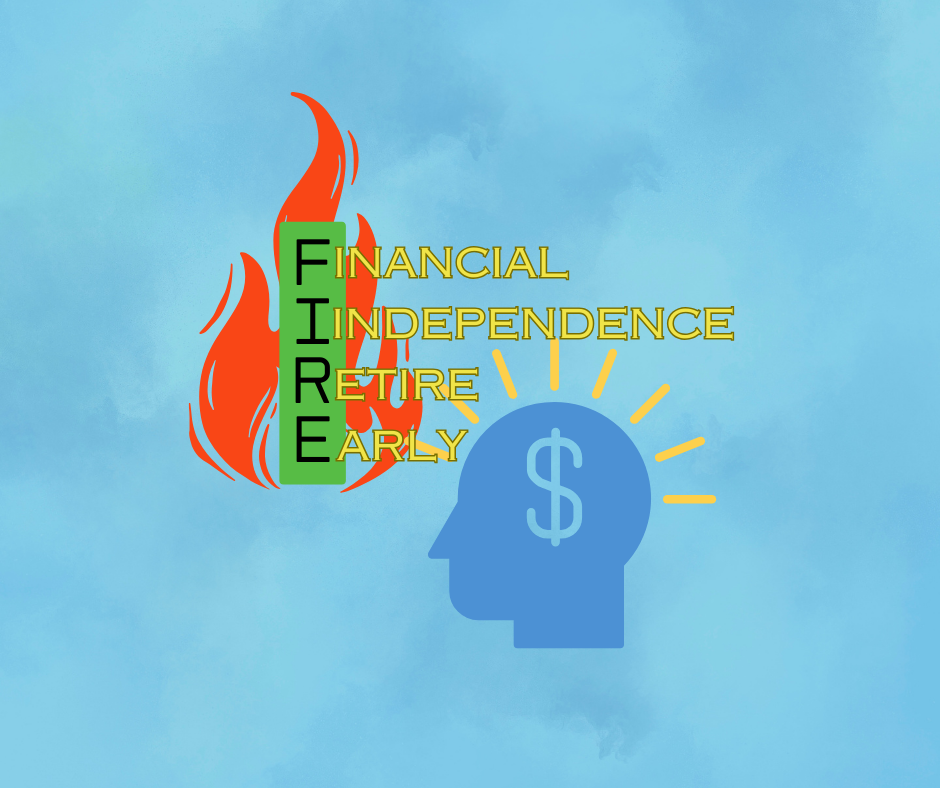What is Financial Independence, Retire Early: FIRE Movement ?

The FIRE movement, that is, Financial Independence, Retire Early, is the financial movement that, over the last few years, attracted people seeking a different attitude toward work, savings, and how to fulfill life. Proponents of the FIRE philosophy are only after retiring to financial independence but do that in a manner that would make them retire much earlier, about 35 years from now, instead of the age of 65 as in the old retirement age. Below is an article that goes into the principles behind the FIRE movement, strategies by different individuals, and what one could do to achieve financial freedom and early retirement.
Understanding the FIRE Movement
The core principle of the FIRE movement is that enough can be saved to make investments and live off the earnings, thus freeing individuals from having to rely on a paycheck for living. The FIRE movement promotes minimalism, extreme cost-cutting, and maximum saving. The goal is to produce a self-supporting income stream from investments that will last for life.
Key Principles of FIRE
1. Financial Independence: Financial independence actually means saving and investing enough that the funds will cover living expenses so one does not have to work and make an income anymore. The idea is to be at a net worth where investments will generate sufficient passive income to live off of.
2. Aggressive Savings: People often encourage saving 50% or more of their income. It really requires a lot of discipline and commitment to planning one’s budget and getting rid of wasteful expenses.
3. Prudent Investment: For wealth creation, the FIRE movement has quite a focus on putting funds into low-cost index funds, real estate, or other vehicles that can provide returns over a decent period of time. The thought is to create enough passive income so that one can substitute it with earning income.
4. Frugality and minimalism: Probably the most common practice on the way to FIRE is a life of frugality. Sometimes this might involve downsizing living arrangements, eliminating debt, and simply cutting back on discretionary spending to save more for investments.
Types of FIRE
While the concept of FIRE remains the same, approaches within the movement vary significantly, each with unique characteristics:
1. Lean FIRE: This type of approach is when you get to financial independence at a lower expense level. Lean FIRE users will sometimes live a minimalist lifestyle with extreme frugality to dramatically cut down their living costs.
2. Fat FIRE: Whereas Fat FIRE strategies are linked to a higher level of spending in retirement, the more someone saves aggressively, the more they might need their net worth to support that desirable lifestyle.
3. Barista FIRE: It is a path that gives one the opportunity to be part of the financial freedom world while working part-time. The pursuers of this goal may have a side job or part-time work to supplement their incomes while enjoying freedom.
4. Coast FIRE: In Coast FIRE, one saves aggressively until there is a certain amount in his or her “bucket” before getting to a “coast” on that, allowing the investments to grow in value without additional contributions. This allows for a less stringent saving period during old age but still ensures financial independence.
Steps to Achieve FIRE
Achieving financial independence as well as early retirement is the result of a well-thought-out plan and disciplined action. The following are some steps an individual can take to start on the path toward FIRE.
1. Define Your Goals: Define what financial independence means to you. Decide how much money you will need in order to retire comfortably, along with what you want your lifestyle to be when you are retired. For instance, it may be helpful in setting up more specific savings and investment goals.
2. Develop a Budget: Building a detailed budget is a good way to track income and expenditure. Identify what you can cut and maximize savings. This includes downsizing your living situation, home cooking, and limited discretionary spending.
3. Increase Your Income: Find opportunities to increase your income through side hustles, freelance work, or promoting yourself in your present job. You can increase your earnings so that you save faster, closer to attaining your monetary objectives.
4. Save Aggressively: You should save at least 50% of your income, if possible. Automate your savings by setting up a direct deposit into your investment accounts. That way, you ensure that you always save first before spending, prioritizing your pocket over want.
5. Invest wisely: Buy Index Funds or ETFs, which are low-cost vehicles that grow your wealth over time. Diversify the portfolio in such a way that it is not carrying any excessive risk with an aim for a mix of stocks, bonds, and possibly real estate, depending on the degree of risk one is willing to take.
6. Monitor Your Progress: Monitor your finances to ensure you are on track with meeting the set goals. Modify your budget, saving rate, and investment strategy accordingly. This will also help motivate and keep you on track.
7. Retirement Plan: Considering how you can withdraw these retirement savings, many FIRE advocates would say to use the 4% rule, which says that you can safely take 4% of your retirement savings annually and not run out. Of course, use a percentage that you feel more appropriate to your own circumstances and the general market conditions at the moment.
Challenges for the FIRE Movement
While this FIRE movement promises quite a route to freedom financially, there are obstacles to think about:
1. Lifestyle Changes: Embracing frugality can be very tough, and drastic lifestyle changes can be really hard in such a consumerist culture.
2. Market Risks: Investment performance may fluctuate; thus, market downturns sometimes affect savings. It is good to have a well-thought-out strategy on investments and an emergency fund to see through economic downturns.
3. Social Pressure: Pursuit of FIRE will lead to social isolation as most friends and family would not appreciate those values concerning frugality and financial independence.
4. Ensuring Sustainability in the Long Run: Your plan needs to be sustainable even in the long run. Health problems, some costlier demands, or radical changes in lifestyle can all help change your retirement plans.
Conclusion
The FIRE movement is a growing movement toward leaving the strangulating shackles of work behind, so to speak. Working towards early retirement through aggressive saving, wise investment, and a frugal lifestyle can help to achieve financial independence at a much younger age.
The path to FIRE is not easy and very often involves lifestyle changes, but the reward is well worth it. Those who successfully ride the path can indulge in passion pursuits, wanderlust, or simply vacation without worrying about any financial stressors. If you are contemplating the FIRE movement, know that it is not early retirement; it is forming a meaningful life that is in line with your values and goals.
FAQs
Q. How much do I need to save for an early retirement?
- The amount to retire early depends greatly on how much one expends for one’s purposes and lifestyle. A popular rule of thumb is to determine your yearly spending and then multiply it by 25, keeping in mind that the 4% rule applies.
Q. What is the 4% rule?
- The 4% rule is the rule of thumb for taking money out of retirement savings. Though this rule implies you can safely take out 4% of your portfolio every year in retirement and not be wiped out at the end of 30 years, circumstances vary.
Q. Do I have to quit working completely after reaching FIRE?
- Yes! Many who follow the FIRE movement engage in part-time work as soon as they become financially independent. Dubbed Barista FIRE, it is increasingly becoming popular since it offers an excellent balance between leisure and income with full-time financial freedom.
Q. How do I track my progress toward FIRE?
Controlling your spending and looking at where your money goes – tracking your expenses and savings growth, as well as the growth in investments. Use budgeting apps or spreadsheets to analyze your financial progress and modify your strategy accordingly.
Q. What are some good books, blogs, and podcasts for learning more about FIRE?
There is a huge number of FIRE blogs, podcasts, and books. Some of the popular ones are as follows:
- Blogs like “Mr. Money Mustache,” “The Financial Independence Blog,” and “The Mad Fientist.”
- Some popular podcasts are “ChooseFI” and “The BiggerPockets Money Show.”
- A few books recommended are “Your Money or Your Life” by Vicki Robin and Joe Dominguez, and “The Simple Path to Wealth” by JL Collins.
Q. Is the movement suitable for everyone?
- The FIRE movement is appealing but probably not for all. There are considerations for each individual given their personal financial goals, family obligations, and lifestyle. It requires much time and a huge change in one’s savings and lifestyle.

Owner of Paisewaise
I’m a friendly finance expert who helps people manage money wisely. I explain budgeting, earning, and investing in a clear, easy-to-understand way.


Pingback: 10 Financial Podcasts That Will Change Your Life - Paisewaise
This blog provides a wealth of information on these subjects. Thank you for sharing your wisdom with your readers.
You’ve provided helpful knowledge that will definitely help me in my work.